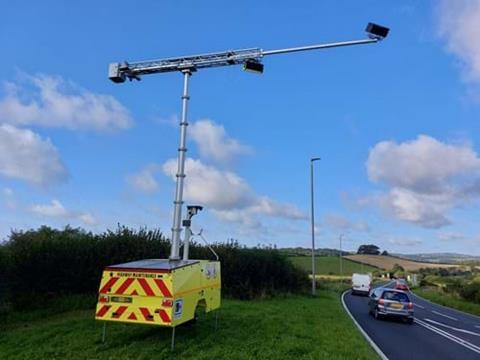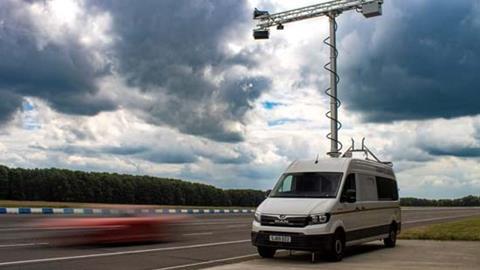Police forces across the country are trialling new technology that can automatically detect when HGV drivers are not wearing a seatbelt or are using mobile phones while driving.
National Highways said 10 forces are now using the kit, which is mounted to a vehicle or trailer and has multiple cameras giving differing views of the driver and their passengers.

The images taken are passed to police for consideration on any action to be taken. Drivers can be fined up to £500 for not wearing a seatbelt in addition to penalty points.
Using a mobile phone while driving can result in a fine of up to £1,000 and six penalty points.
The trial first launched in 2021 when motorists spotted driving without seatbelts or on the phone by police using the technology were sent warning letters informing them of the dangers of their behaviour.
The latest trial, which relies on AI to analyse whether a driver could be using a handheld mobile phone or is without a seatbelt, began on 19 February and will run until March 2025.
There are also plans for the technology to be fixed to gantries for the first time giving an unobscured view of all lanes.
The tech can detect offences in any vehicle, but the police have regularly drawn attention to professional drivers caught on the phone or not using a seatbelt.
Research shows that you are four times more likely to be in a crash if you use your phone while driving and twice as likely to die in a crash if you don’t wear a seatbelt.
In partnership with Aecom, the research is now being extended to work with more police forces to help learn more about how the technology could work on National Highways roads and inform a possible future roll-out nationwide.
The forces taking part in the trial are Durham, Greater Manchester, Humberside, Staffordshire, West Mercia, Northamptonshire, Wiltshire, Norfolk; Thames Valley and Sussex.
National Highways head of national road user safety delivery, Matt Staton, said:
“We know that distracted driving and not wearing seatbelts were key factors in a high number of incidents that resulted in people being killed or seriously injured.
“Working with our police partners we want to reduce such dangerous driving and reduce the risks posed to both the drivers and other people. We believe that using technology like this will make people seriously consider their driving behaviour.
“We will continue to invest in technology that could help make sure everyone using our roads gets home safe and well.”
Although the research is funded by National Highways, enforcement of motoring offences remains a matter for individual police forces.













